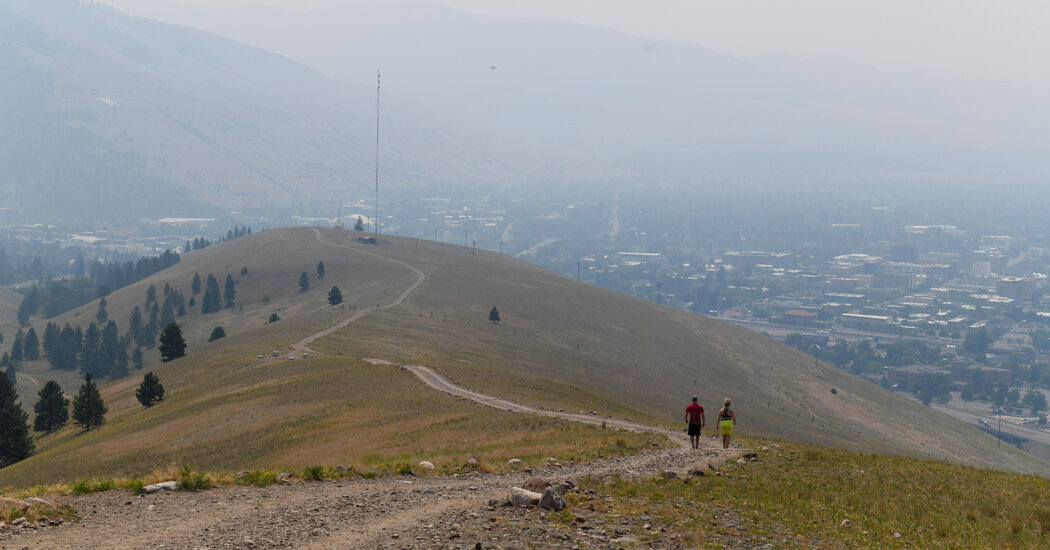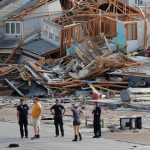
A summer of unrelenting heat in the western United States and Canada hit the Northern Rockies this weekend, where temperatures reached the upper 90s and lower 100s with a heat wave that is expected to peak on Monday but ease only slightly through the week.
It was the fourth major heat wave to afflict parts of the West since early June, bringing dangerously hot temperatures and helping fuel the deepening drought and exploding wildfires across the region.
An excessive heat warning will remain in effect for parts of Montana through Tuesday night, according to the National Weather Service. Billings, in the south of the state, is forecast to reach 106 on Monday while Glasgow, a town toward the north, may reach 107. Livingston, Big Timber and Sheridan could all hit 100 on Monday. Temperatures will fall just a few degrees as the week progresses, delivering minimal relief from the sweltering heat.
Salt Lake City hit 104 degrees on Sunday, tying the daily record set in 1960, meteorologists said; it was the 17th time this year that the city hit 100 degrees or higher. Monsoonal rain was expected through the region and continue spreading northward across all of Utah and southwest Wyoming on Monday, bringing some relief to parts of the region.
Several areas around Boise, Idaho, hit the 100-degree mark on Sunday, and meteorologists forecast cloud cover and thunderstorm chances to increase Monday through Wednesday, which may lower maximum temperatures by a few degrees.
The soaring temperatures have made wildfire season particularly dangerous. A rapidly spreading wildfire just south of Lake Tahoe in California exploded over the weekend, prompting evacuations of several communities.
Windy and dry conditions fueled the growth of the Bootleg fire in Oregon over the weekend, prompting an increase in evacuations. The fire, the largest of dozens in the United States, has burned more than 300,000 acres in southwest Oregon and is 25 percent contained. The size of the fire is about 467 square miles or roughly the size of Los Angeles, fire officials said.
“The weather is really against us,” John Flannigan, the operations section chief, said at a news briefing on Sunday. “It’s going to be hot, it’s going to be dry, and the air’s going to be unstable, which helps the heat raise faster, which brings in more air. All things that are negative for firefighters and positive for fire.”
Triple-digit temperatures that roasted the Pacific Northwest in late June and early July killed hundreds of people in Oregon, Washington and British Columbia. The event, the result of a heat dome, would have been all but impossible without climate change, according to a team of researchers.
As for the wildfires that are spreading across the west, half are initiated by lightning and half are caused by humans. They are frequently started by power lines, cigarettes, cars, camp fires or arson.
In recent years, there’s been an abundance of very dry fuel. Drought and high heat can kill trees and dry out dead grass, pine needles and any other material on the bottom of the forest floor that act as kindling when a fire sweeps through a forest.
Wildfire experts see the signature of climate change in the dryness, high heat and longer fire season that have made these fires more extreme.

Average Rating